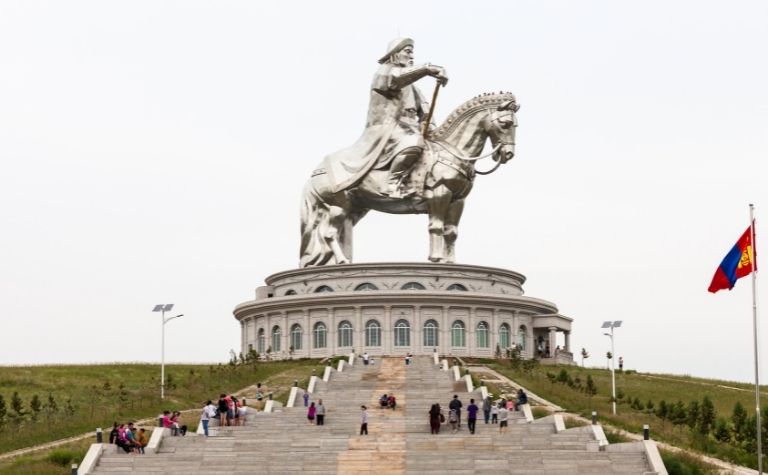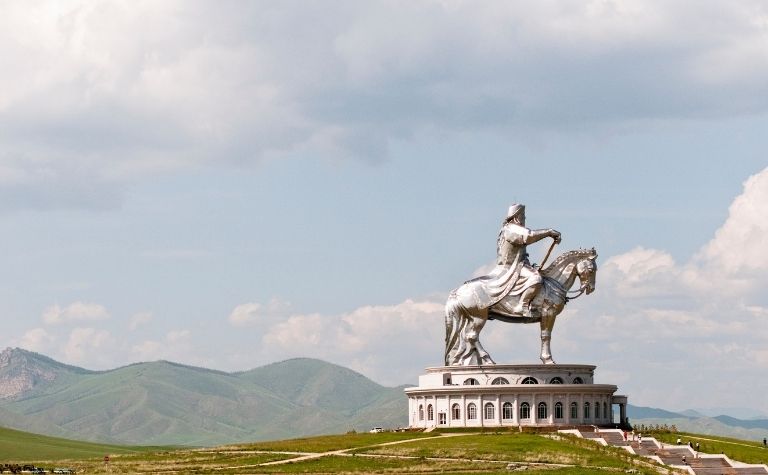The Vikings and the Mongols were sometimes fierce societies that had found great success in battle. They plundered across Europe, and Asia, and even reached North America.
During the years of expansion that each group experienced, some wonder if they ever encountered one another on the battlefield.
The Vikings and Mongols never fought each other.
Viking raids in Europe occurred between 793 and 1066 A.D., while the expansion of the Mongolian Empire began at the beginning of the 13th century.
These historical timelines rule out any possible meeting between the two people groups.
Did descendants of the Vikings fight the Mongols? Who would have won between the Vikings and Mongols? Did the Mongols fight any Europeans? Who defeated the Mongols?
Keep reading to learn the answers to these questions and others.
Also see Did the Vikings Travel to Asia? to learn more.

Did descendants of the Vikings fight the Mongols?
Even though the Vikings did not ever meet Genghis Khans’ Mongolian Empire on the battlefield does not rule out a meeting between Viking descendants and Mongolian troops.
The Swedish Vikings did travel to Istanbul through the Russian River Valleys.
There, they met and battled the Tartars, a people who the Mongols later subjugated.
If any Vikings had settled along this path, their descendants would have met the Mongolian troops, probably even in battle as they passed through the area later.
Who would have won between the Vikings and Mongols?
The Mongols would probably have come out as the victors if it had been a battle between them and the Vikings.
Although Vikings were large, strong, and dangerously effective in combat, they did not have the same technology that the Mongolian forces had.
Technology And Fighting Style
The Vikings attacked in raiding parties mostly on foot and did not have consolidated armies that fought in their hundreds and thousands.
The Viking raiding parties’ primary weapons of choice were axes and strong shields, and they entered into battle on foot, either head-on or from strategically positioned hiding places.
On the other hand, the Mongolians were incredibly well-trained soldiers brought together into an army.
They entered battles on the backs of their warhorses using technologically advanced weaponry, especially their archery.
It is harder to fight against forces seated in a saddle up on a horse when you are on foot.
Even if the Vikings had horses, the Mongolians’ training would still have exceeded theirs in the saddle.
Also see Famous Viking Leaders and Kings to learn more.
Fighting Location
What it would come down to would be where the two forces met. If they met on the Vikings’ home ground, there would have been quite a big chance that the Vikings might have overcome the Mongols.
This victory would have been because of the Vikings’ adaptability to the low resources their land had on offer.
They would have also had the home-ground advantage, which provided them with ample opportunity to build adequate defenses and use guerrilla warfare techniques adapted to suit their needs.
On the other hand, the Mongols would not have been used to the low resources available to feed their vast armies, which would have immediately impacted their success in the field.
Homeground would also have opened up the opportunity for the Viking raiders to attack the Mongols at night when they least expected it and were not seated on their horses.
A surprise ground attack by Vikings on the Mongols could have resulted in a victory for the Vikings.
If the two were to have faced each other on any other lands while the Mongolian forces were seated upon their horses, it would indeed have ended badly for the Viking forces.
The Mongolian soldiers could shoot their arrows and then withdraw before firing again at the Vikings, disadvantaging the Vikings on the battlefield.
Also see Were the Vikings German to learn more.

Did the Mongols fight any Europeans?
Once the Mongols had effectively taken over the majority of Asia, they expanded their invasion to include Eastern Europe.
City after city fell to their ruthless horde as time went by, starting with the attack and subsequent defeat of the armies of Ryazan in 1237.
The Mongols then sacked Suzdalia and many other major cities in Russia.
After they invaded the Russian cities, they turned their attention to raiding the steppe, where they crushed the Kypchaks, Alans, and Crimea.
By 1239 they had effectively conquered cities such as Kyiv, Pereiaslav, and Sutiejks.
They even sent a small detachment to probe at Poland’s defenses before they continued onto Central Europe.
In 1241 the Mongolian armies defeated the armies of Hungary, sweeping through the country and killing almost half of its population.
They also extended Mongolian control over the cities of Dalmatia and Moravia.
After 1241 the Mongolian forces pillaged their way through Poland and into its neighboring kingdoms.
At the end of 1241, the Mongolian army had defeated most of the Kingdom of Hungary, with the countryside overrun and only the fortified cities and forts surviving the attack.
At the beginning of the following year, 1242, the Mongolian armies started attacking Croatia.
Luckily for the Croatians, the Mongols’ long-term occupation plans were thwarted, but most of Croatia was still destroyed and plundered during the attacks.
Austria, Bulgaria, and Germany all suffered attacks from the Mongolian armies.
Luckily 1242 saw the withdrawal of most of the Mongolian forces back to their Empire.
The following decades saw numerous raids into Europe by Mongolian troops, but none were as significant as the previous attacks.
Also see What is the Meaning of the Valknut Symbol? to learn more.

Who defeated the Mongols?
Before the rise of Genghis Khans’ Mongolian forces, the Tartar and Jin armies defeated the Mongols in 1161.
The Mongols suffered several defeats during the Mongolian expansion across Asia and Eastern and Central Europe. These include:
- 1227: The Mongols faced the Mordvin Finns, where they got defeated at the Battle of Samara Bend
- The Khwarazmians defeated the Mongols several times over the years
- 1241: The Mongols faced the Poles at the battle of Raciborz, where the Poles defeated them
- 1260: The Mongol armies under ‘Ain Jalyut faced the Sultan Qutuz at Kitbugha and lost
- 1274 and 1281: The Mongols faced Japanese armies and lost both times
- The Vietnamese defeated the Mongols on three different occasions
- 1286: The Mongols faced off with the Poles again and lost
- 1285-1286: The Hungarians effectively pushed back the Mongolian forces
- 1386: The Russians defeated the Mongolians in Kulikovo
Conclusion
The Vikings did not ever meet the Mongols in battle as their timelines did not overlap.
The Vikings traveled through Europe between 793 and 1066, while the Mongols only started their expansion beginning of the 13th century.
Also see What Do Scandinavians Think of Vikings? to learn more.
